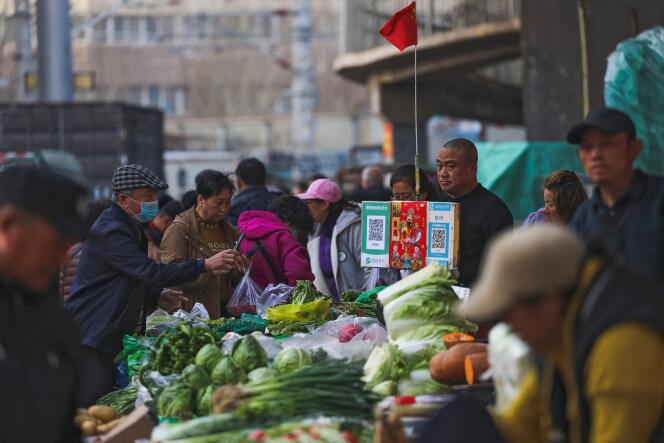Industry in China allows growth to resume in the first quarter


In a period of questions about the trajectory of China’s economy, data on its progress in the first quarter, released on Tuesday, April 16, is likely to calm but not close the debate on two crucial issues: low household confidence and the problem of excess capacity. According to the National Bureau of Statistics, the planet’s second-largest economy posted growth of 5.3% in the first three months of 2024, symbolically surpassing the 5.2% for all of 2023 and also the GDP growth target set by Beijing. About 5% this year.
China’s economy has struggled to restart after abandoning a “zero-covid” policy that largely cut it off from the rest of the world, while the real estate market, long one of the engines of growth in the urbanizing country, is. in crisis. Economists are therefore looking at the details of these statistics to find out what is driving China in the post-Covid-19 pandemic era. “Growth is better than expected”notes Wang Tao, UBS Bank’s chief China economist.
Industrial production plays an important role in this new model. It rose 6.1% year-on-year in the three months to 2023, but has slowed since March, rising 4.5% from 7% in January-February. Chinese President Xi Jinping made the development “New quality production forces” its leitmotif. And, in fact, the high-tech sector is growing by 7.5%. But China’s manufacturing machinery is far from operating at full capacity: the industry is at 73.6% of its capacity, the lowest in four years, while it was operating at 75% in the last three months of 2023.
Which won’t lead to a debate about China’s overcapacity. They are fueling growing tensions with China’s trading partners, including the European Union, which has already launched an anti-dumping investigation into state subsidies, particularly in the electric car and wind turbine sectors. According to Bloomberg, Brussels may also begin, in the coming days, the procedure to close the Chinese market for foreign medical devices, one of the sectors where tenders are regularly closed to non-Chinese suppliers.
Replacement of industrial equipment
Domestic demand indicators, which have been widely studied, show mixed results, suggesting that Chinese households remain in limbo. Retail sales rose 5.5% in January-February, a period that includes the Lunar New Year holiday, sources of spending, but rose just 3.1% in March from a year ago, or 4.7% in the three months. The Chinese New Year helped the service industry, including hotels and restaurants. “The recovery is continuous, but modestM. notesI Wang. Consumer confidence still needs to improve. »
Source: Le Monde
Leave a Reply